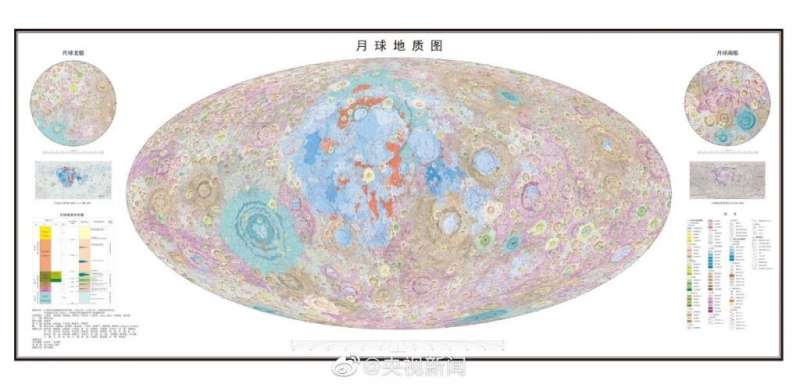
Chinese scientists have created the most detailed map of the moon yet. It took them 10 years and involved hundreds of researchers. The new map will be a boon to lunar exploration and for anyone who just wants to study our natural satellite in more detail.
Up until now, the USGS map of the moon has been the standard. But that map has a resolution of 1:5,000,000. The new map supersedes that with a resolution of 1:2,500,000.
The new map from Chinese scientists is also based on the latest findings on the moon. China began its lunar exploration program in 2004 and has sent its own orbiters, landers, and rovers there. Those missions gathered data that fed into the map.
The Institute of Geochemistry of the Chinese Academy of Sciences led the project and other Chinese institutions took part. The map shows 12,341 impact craters, 81 impact basins, 17 rock types and 14 types of structures.
It’s difficult to overstate how detailed the map is. The tighter you zoom in the more detail there is.
Other maps of the moon were created with data from space-faring nations, and while they’ve been effective, there were different standards and capabilities behind all that data. But this map is all built to the same standard.
Researchers started by dividing the moon into 30 quadrangles. Each of the quadrangles was mapped to the same standards and the quadrangles were stitched together into one map. The data from the map came from China’s own lunar program and from exploration by other space-faring nations, as well. The result is a synthesis of knowledge captured over decades.
“As syntheses of current knowledge on lunar geology and evolution history, lunar geologic maps are fundamental resources in science research, exploration planning, and landing site selection,” the paper presenting the map says.
-
This screenshot from the new lunar map is centred on the Tycho Crater. The map shows the composition and structure of the lunar surface and over 12,000 craters. Credit: Science Bulletin/Research Gate
-
This screenshot is a zoomed-in look at the Mare Tranquillitatis and gives a good representation of the detail on the map. The red stars are volcanic vents. Credit: Science Bulletin/Research Gate
-
Zoom in on almost any spot on the map and an enormous amount of detail is available. The blue lines are wrinkle ridges, and the red truncated triangle outlined in blue indicates pure anorthosite. Credit: Science Bulletin/Research Gate
-
This is a screenshot of a small part of the map’s legend. The legend contains an enormous amount of detail. Credit: Science Bulletin/Research Gate
This map is a fantastic resource for anyone who wants to understand the Moon in more detail. It is downloadable at the reference below, but be warned! The file is 150 MB.
The 1:2,500,000-Scale Geologic Map of the Global Moon. dx.doi.org/10.12176/03.99.02797
Geologic map of the entire moon at 1:2,500,000 scale (2022, June 15)
retrieved 16 June 2022
from https://phys.org/news/2022-06-geologic-entire-moon-scale.html
part may be reproduced without the written permission. The content is provided for information purposes only.